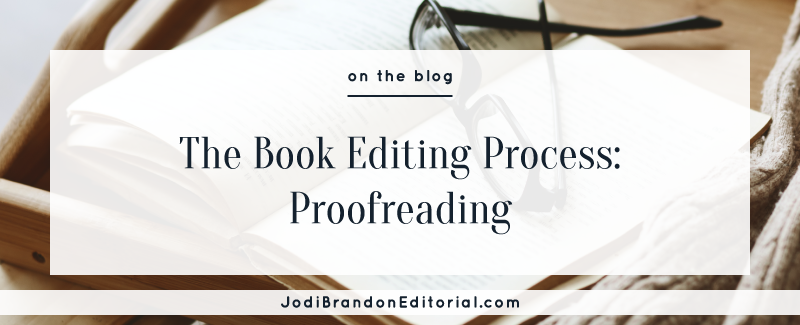The Book Editing Process: Proofreading
Proofreading is one of the types of editing.
Taken literally, proofreading means to “read against the proof.” In earlier days of book publishing, a proofreader’s job was to check the typesetter’s work by comparing two documents side-by-side: the printer’s proofs versus the source document from the typesetter. Today the process looks a bit different and is usually what we call a “cold read,” looking for errors but not comparing (reading) the final document (proof) against anything.
Proofreading is not the same as copy editing, as far as the type of work being done as well as when the work is being done. Proofreading is done after a book has been typeset; copy editing is done before a book has been typeset.
Here are some of the things a proofreader will check for:
Consistent spelling and punctuation
TOC is correct/page numbers match
Headers
Images/graphics have titles/captions as appropriate
Widows/orphans/single word on a line
Unnecessary spaces
Headers
No missing elements (e.g., title page, copyright page)
Book sections in the right order
Of course all of these are important, and you don’t want to publish your book with any of these potential errors unaddressed, but this is more surface-level, whereas copy editing and developmental editing are structural. Here’s how one of my former English teachers explained this: You can put lipstick on a pig, but it’s still a pig. So...first of all, that’s a weird thing to say to middle-schoolers, right? But I understand what she meant. A book with all the words spelled correctly and typeset properly still won’t be successful if the contents of the book is not clear, necessary topics are missing, and more.
If there are glaring editorial issues, your proofreader will likely point them out (because she’s an editor, after all, and likely can’t help herself; been there!), but she won’t fix them. You aren’t paying her to, remember?
Don’t Skip Proofreading!
Many people mistakenly think that hiring a proofreader is equivalent to having their book edited. This is not the case. However, I implore those who are self-publishing and say they cannot afford editing to please, please, please not skip proofreading. The proofreading process will correct the most obvious surface-level issues and, with any luck, identify for you anything that an editor believes MUST be fixed before publication. (What an author does with that information, of course (if anything), is up to them.) Think of proofreading as a “last look” on your typeset pages before they are printed and bound (or uploaded, if you’re doing an ebook version only).
Do you have questions about proofreading vs. copy editing and which one you might need/want for you book project? Book a Book Brainstorm Session today and let’s chat!


